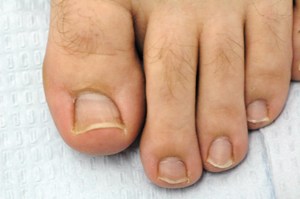Testimonials
REVIEWS OF DR. SCHULER
Panama City Podiatrist Explains Heel Spur Pain
 Morton’s Toe,
Video Clip: Click to Watch video explaining Morton’s Toe,
When you walk do you experience a painful sensation in the back part of your foot? If so, you may be suffering from heel spurs, which are abnormal bony growths in your feet. Although your heel bone has skin and fat layers that protect it from wear and tear, spurs form when there is extra pressure on the foot. The connective tissue connecting the heel to the toes gets affected, and a bony growth that presses against the heel and leads to heel spur pain will appear. This condition is common in those people who make excessive use of their feet such that there is added pressure applied to the heel. But if simply being on your feet alot is what causes heel spurs, then wouldn’t every individual who makes excessive use of their feet have problems? Why do some people develop pain while others do not? According to Panama City podiatrist, Dr. Burton Schuler, who has treated many patients with heel spur pain, heel spurs form when there is an overpronation of the foot. One common condition that causes overpronation is called “Morton’s Toe,” Long Second Toe, and Schuler believes that the likelihood of suffering from heel, foot, or leg pain is much higher if you have a Morton’s Toehttp://whyyoureallyhurt.com/mortons-toe/heel-pain/). A Morton’s Toe is caused by hypermobility of the first metatarsal bone, causing the second toe to be longer than the first toe. The condition is named after Dr. Dudley J. Morton, who first wrote about Morton’s Toe as early as 1928, linking it to a wide range of foot problems. The most common reasons for heel spurs and heel pain is due to excessive stress and stains applied to the heel bone and the soft tissues structures that attach to the heel bone when we walk. This abnormal stress and strain is caused by Abnormal Pronation, which is the result of having a Morton’s Toe, Long Second Toe . Our modern-day society, where many jobs demand long hours of standing on hard concrete, that are unforgiving on our feet also contributes to heel problems. Over a period of years one of the major structures attached to the heel called the plantar fascia (this is the large rubber band structures that hold up your arch, and that goes from the heel to the ball of the foot) pulls away from the calcaneus (heel bone) and causes microscopic bleeding to occur. This bleeding can lead to ne4FB5UKWKUPXAw bone formation at the heel which eventfully leads to the formation of a bone spur. “Heel Spur Syndrome” is pain of the heel when the plantar fascia is just pulling abnormally at the heel without a spur being formed While available medical information suggests numerous ways to treat heel spur pain, including surgery, exercise/ stretching, ice, pain creams, pain killers, special shoes and rest , Schuler maintains that simplest and most effective treatment is his toe pad, placed under the foot beneath the first metatarsal bone. 4FB5UKWKUPXAv |

